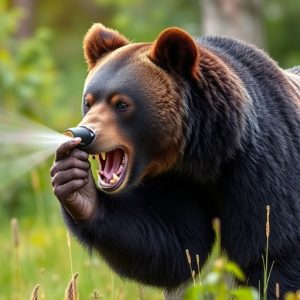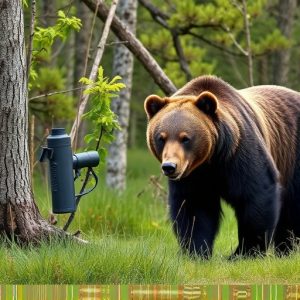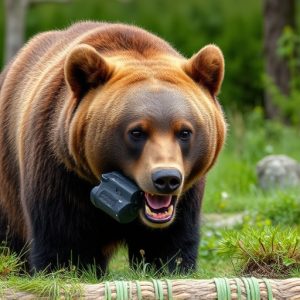Bear Repellent Spray: Effectiveness, Environmental Impact, and Optimal Use Duration
Bear spray, while vital for deterring bears in country with bear populations, poses environmental ri…….
Bear spray, while vital for deterring bears in country with bear populations, poses environmental risks through soil contamination and aquatic toxicity if misused. Its effectiveness lasts around 6-8 hours per application, depending on proper technique like spraying at a 20-30 degree angle to ensure full body coverage and minimize ground contact. To mitigate ecological harm, responsible usage includes keeping spray distance from campgrounds and waterways, proper disposal, and educating campers about reducing their environmental impact.
“Enhance your camping experience and ensure safety in the great outdoors with bear repellent spray—an essential tool for any outdoor enthusiast. This comprehensive guide explores the ins and outs of bear spray, delving into its science-backed effectiveness against these formidable creatures. We also address a critical yet often overlooked aspect: bear spray soil contamination and its environmental implications. Additionally, learn about application techniques and duration to maximize protection during your next adventure, especially considering key factors like duration and proper use.”
- Understanding Bear Spray: How It Works and Its Effectiveness
- Bear Spray Soil Contamination: Mitigating the Environmental Impact
- Duration and Application Techniques for Optimal Protection
Understanding Bear Spray: How It Works and Its Effectiveness
Bear spray, also known as bear repellent, is a crucial tool for campers and hikers navigating areas with bear populations. Understanding how it works and its effectiveness is essential before venturing into the wilderness. When used correctly, bear spray creates an immediate barrier, releasing a potent mix of chemicals that deter bears from approaching. The primary active ingredients disrupt a bear’s sense of smell and cause irritation, prompting an escape response.
The effectiveness of bear spray depends on various factors, including the distance between you and the bear, wind direction, and weather conditions. Typically, bear spray has a range of around 20-30 feet (6-9 meters), so it’s crucial to use it at close proximity. In terms of duration, bear spray can provide protection for several minutes, giving users time to retreat or deter the bear. However, proper application and timing are key to ensuring its success, as improper use may result in reduced effectiveness due to soil contamination or improper targeting.
Bear Spray Soil Contamination: Mitigating the Environmental Impact
Bear spray, while an essential tool for camping and outdoor enthusiasts in bear country, raises concerns about its environmental impact, particularly regarding soil contamination. When used improperly or left unattended, bear repellent spray can leach into the ground, potentially affecting plant life and local ecosystems. The duration of this impact is a growing area of interest among researchers.
One of the main issues with bear spray soil contamination is that it can disrupt the delicate balance of soil microbiota, hindering nutrient cycling and plant growth. Moreover, some components in bear spray are known to be toxic to aquatic life, posing risks to nearby water sources if not handled carefully. Mitigating these effects requires responsible usage practices, such as applying bear spray at a safe distance from campgrounds and waterways, ensuring proper disposal of used cans, and educating campers on the importance of minimizing their ecological footprint during outdoor adventures.
Duration and Application Techniques for Optimal Protection
The duration of bear repellent spray protection is a key consideration for campers and hikers. Typically, a single application provides immediate defense against bears for approximately 6-8 hours. This time frame allows users to traverse through known bear habitats or set up camp in potentially high-risk areas with relative safety. To ensure optimal effectiveness, it’s crucial to follow proper application techniques. Spraying should be done at an angle of about 20-30 degrees from the target area, aiming for a cloud of spray that covers the body and any gear from head to toe. This method prevents soil contamination by minimizing the amount of spray that touches the ground, ensuring the repellent remains potent and effective for the intended duration.
When it comes to outdoor adventures, especially camping in bear country, having bear repellent spray is an essential part of your safety kit. Understanding how bear spray works, being mindful of its environmental impact, and knowing the optimal application techniques can ensure you’re well-prepared. By considering these factors, including duration, you can maximize your protection while minimizing potential soil contamination. Remember, proper use of bear spray is a game-changer in ensuring safe interactions with these majestic creatures.


